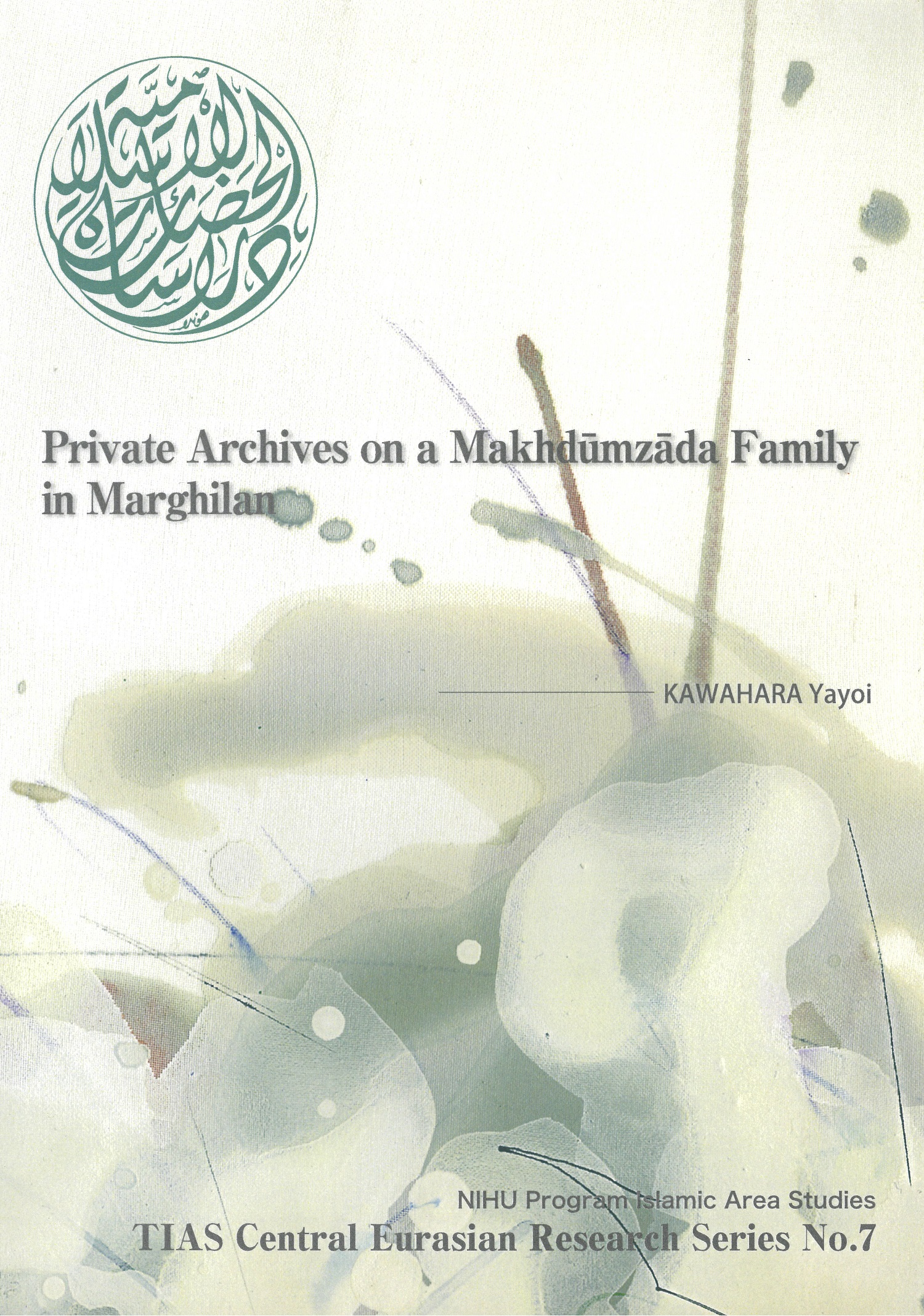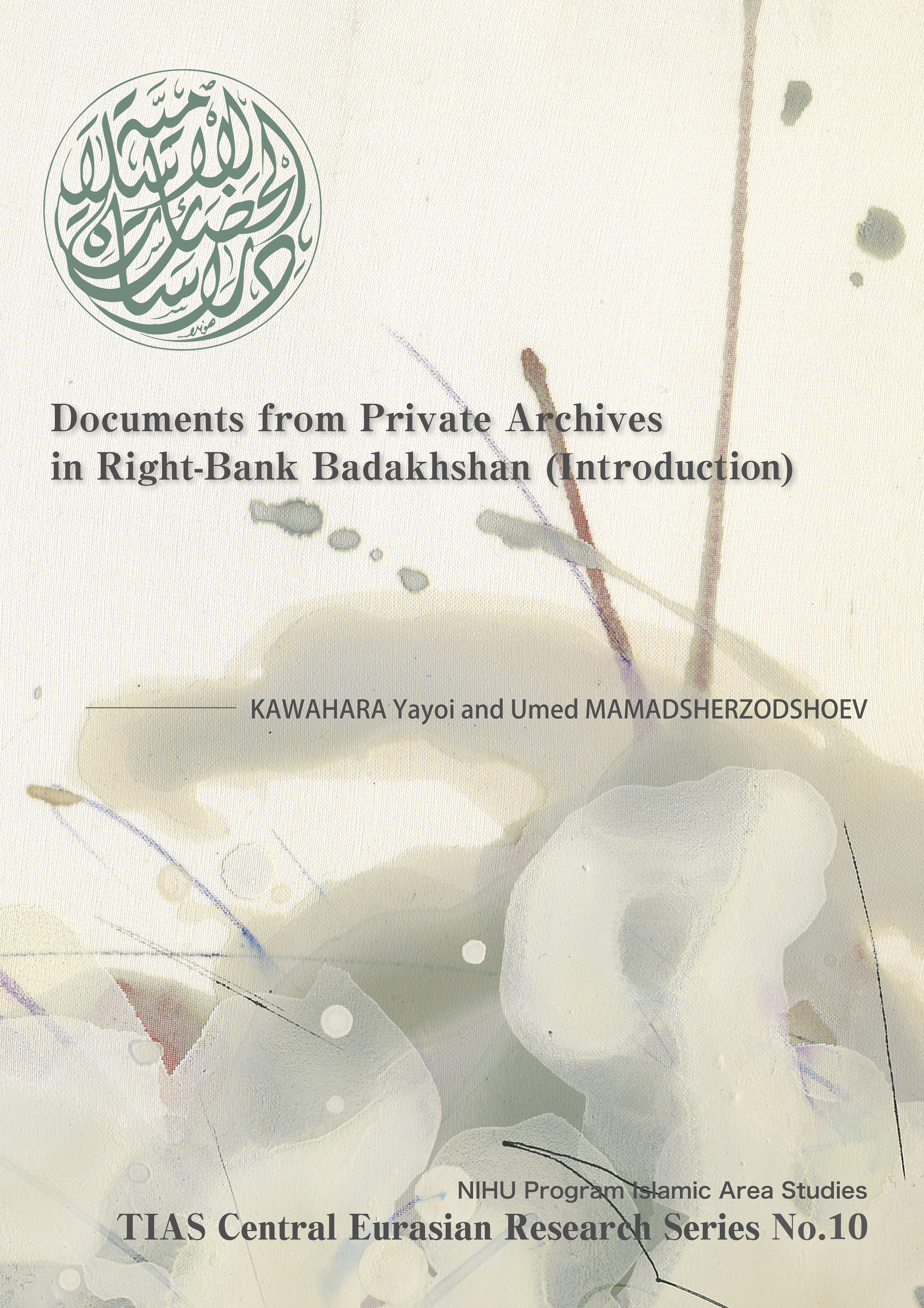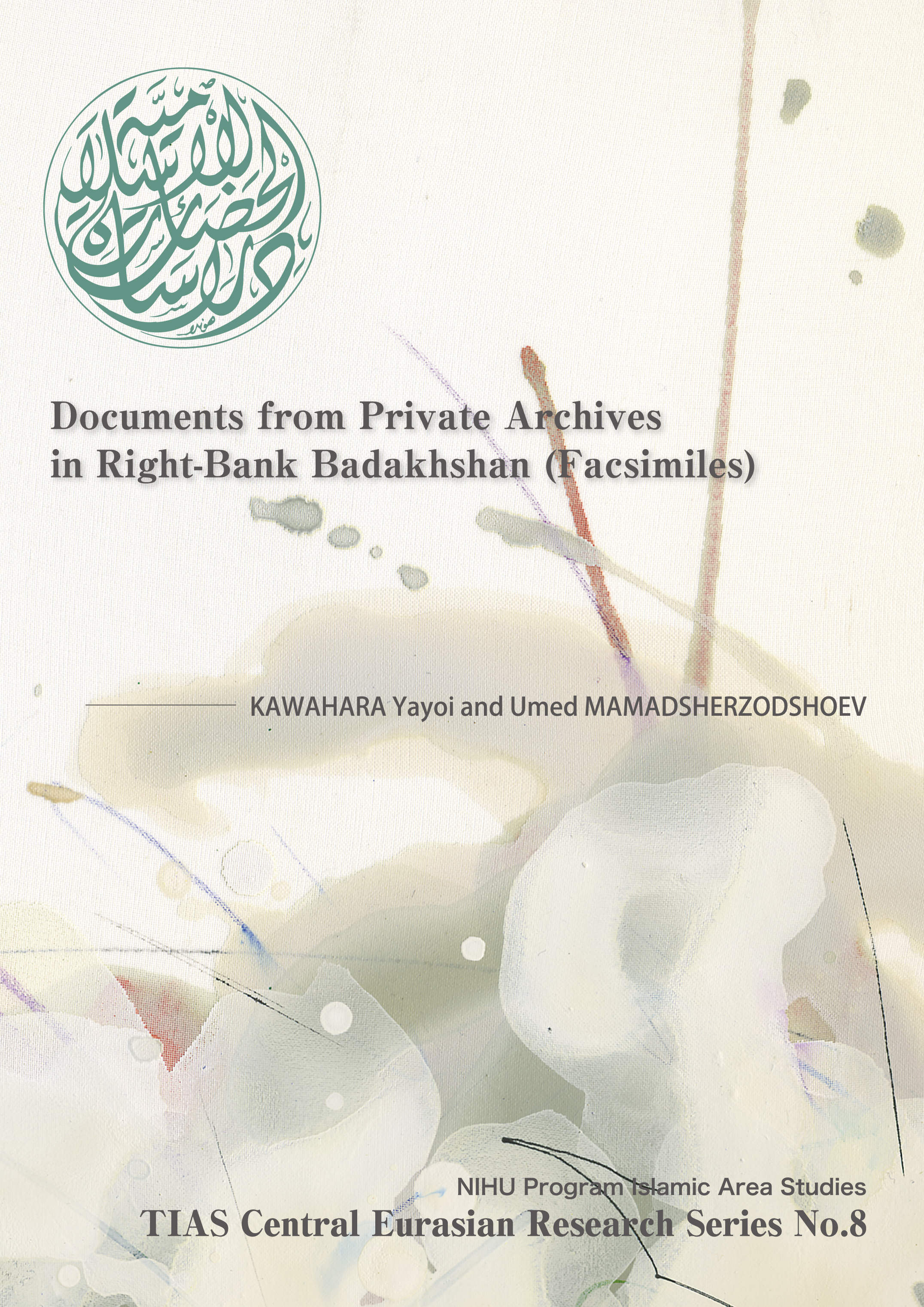
Title
TIAS Central Eurasian Research Series no. 7 Private Archives on a Makhdūmzāda Family in Marghilan
Size
397 pages
Language
English
Released
2012
ISBN
9784904039489
Published by
TIAS: Department of Islamic Area Studies Center for Evolving Humanities, Graduate School of Humanities and Sociology, The University of Tokyo
Book Info
See Book Availability at Library
Japanese Page
Islam is one of the most essential elements to be considered when trying to understand Central Asia. An important role in premodern Islam belonged to Sufi orders that pursued the aim of achieving union with God through spiritual practices, and a particularly profound political and socio-economic influence both on the rulers and the people was exerted by the Naqshbandi order based in Bukhara. Furthermore, at the end of the 19th century, in the face of the predicament of the Islamic social order being threatened due to the annexation by the Russian Empire, the Naqshbandi leaders also spearheaded the holy war instigated by local society against Russia. Even after death, powerful leaders were deified and worshipped in their mazārs (mausoleums) continuing to manifest their significance to posterity.
However, due to the limitations imposed by the atheistic ideology of the Soviet period, this aspect has long been neglected in history studies. After the collapse of the Soviet Union, along with the upsurge of nationalism in the newly born independent countries, historical studies on Central Asia have overall been rapidly developing, but, as to the three Uzbek Khanates of Bukhara, Khiva, and Khoqand of the 18th to 19th centuries, which were the last Islamic dynasties in Central Asia, historical sources are scarce and largely dispersed.
This book presents a collection of historical sources kept in private possession that relate to a Makhdūmzāda family of the Naqshbandi leaders who lived and wielded power in Marghilan, a major city in the Fergana Valley (present Uzbekistan), during the Khoqand Khanate period (early 18th century to 1876) and consists of the bibliographical introduction, facsimiles of the documents, and annotated text. It contains 31 documents and 4 manuscripts of two titles written in the Chagatai and Persian languages, most of which pertain to the 19th century, of the following content: 1) genealogies attesting to the Sayyid origin of the family (i.e., their being descendants of the Prophet Muhammad), 2) fatwas (legal opinions of muftis) on the supremacy of the Sayyids, 3) decrees on tax exemptions issued by the Khoqand khans, 4) deeds for properties of the family, and 5) hagiographies of Walī khān tūra, a powerful leader from this family of the second half of the 19th century.
All these materials were collected by the author through fieldwork research. Although some facts about this family have been fragmentarily known from histories of the Khoqand Khanate and administrative documents compiled under the Russian Empire rule, the family’s origin was unclear. However, in the course of interviews conducted at various mazārs in the Fergana Valley, the author found that the descendants of this family who live scattered throughout the area managed to evade the strict surveillance of the Soviet period and have secretly kept in their possession materials related to their history. A combined analysis of these materials revealed that the family prospered as they greatly contributed to the development of the city of Marghilan and that the above-mentioned Walī khān tūra was a strong leader of the local society who helmed the “holy war” and confronted the Russian military.
This book presents an attempt to explore possibilities of discovering privately possessed historical sources that survived the Soviet period and of using them to elucidate some unknown or poorly known aspects of Central Asia’s history. It is the author’s sincere hope that this publication would provide an opportunity to realize the existence of numerous blank spots in history studies of Central Asia and offer up the inspiration to investigate them.
This publication was published by NIHU Program Islamic Area Studies of the IAS Center at the University of Tokyo as the 7th volume of the TIAS Central Eurasian Research Series. As of January 2022, the PDF data of this publication is available for download from the list of publications page at
http://www.l.u-tokyo.ac.jp/tokyo-ias/nihu/publications/index.htm.
(Written by KAWAHARA Yayoi, Associate Professor, University of Tokyo Library System / 2022)
Table of Contents
Introduction
Makhdūmzāda Families in the History of the Khanate of Khoqand
Private Archives on a Makhdūmzāda Family in Marghilan
I. Genealogies
II. Fatwa
III. Decrees and Memorandum from the Rulers of Khoqand
IV. Deeds
V. Hagiographies
Genealogical Tables of a Makhdūmzāda Family in Marghilan
Notes to the Edition
Facsimiles
I. Genealogies
II. Fatwa
III. Decrees and Memorandum from the Rulers of Khoqand
IV. Deeds
V. Hagiographies
Texts
I. Genealogies
II. Fatwa
III. Decrees and Memorandum from the Rulers of Khoqand
IV. Deeds



 Find a book
Find a book


 eBook
eBook
